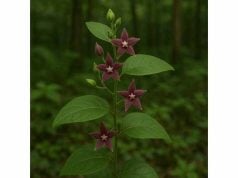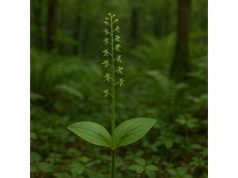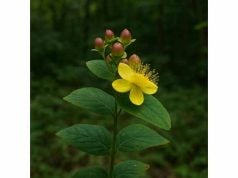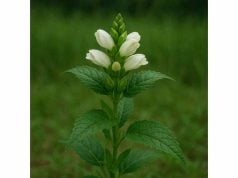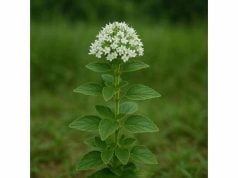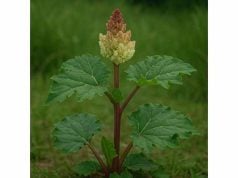
Tree Mallow is a versatile herb renowned for its rich history in traditional medicine and its wide-ranging applications in modern natural health practices. Celebrated for its anti‐inflammatory, antioxidant, and soothing properties, this herb contains powerful bioactive compounds that promote skin regeneration, support digestive comfort, and bolster immune function. With a unique blend of flavonoids, polyphenols, and saponins, Tree Mallow has been used to treat minor wounds, alleviate irritation, and enhance overall vitality. Its diverse uses include topical applications, herbal teas, and supplement formulations, making it a valuable resource for both cosmetic and therapeutic purposes.
Table of Contents
- Floral Identity and Botanical Overview
- Phytochemical Spectrum and Principal Ingredients
- Holistic Benefits and Core Therapeutic Attributes
- Wide-Ranging Uses, Safety Measures, and Application Practices
- Scientific Evaluations and Groundbreaking Study Summaries
- Frequently Asked Questions about Tree Mallow
Floral Identity and Botanical Overview
Tree Mallow, belonging to the Malvaceae family, is a perennial herb that exhibits both ornamental appeal and remarkable medicinal potential. Often characterized by its tree-like structure and lush, velvety leaves, Tree Mallow displays cup-shaped flowers in hues ranging from soft pink to deep purple. Native to Mediterranean and temperate regions, this herb thrives in well-drained, loamy soils under partial sunlight, making it a common sight in natural hedgerows and cultivated herb gardens.
Botanically, Tree Mallow is distinguished by its branching woody stems and a robust root system that helps it withstand adverse environmental conditions. Its leaves are typically broad, with a slightly serrated margin and a fuzzy surface that retains moisture, while its large, vibrant blooms attract pollinators such as bees and butterflies. The plant’s reproductive strategy includes both seed production and vegetative propagation through suckers, which ensures its resilience and long-term survival.
Taxonomically, Tree Mallow has been the subject of numerous botanical studies due to its evolutionary adaptations and wide distribution. The plant exhibits a rich genetic diversity that allows it to adapt to varied climates and soil types, which is evident in its morphological variations across different regions. Its ability to flourish in disturbed habitats also highlights its utility in ecological restoration and erosion control projects.
Ecologically, Tree Mallow plays an important role in supporting biodiversity, offering shelter and food to a variety of insect species and small mammals. Its natural habitat, often found along riverbanks and in semi-shaded woodlands, underscores its need for moderate moisture and a steady supply of nutrients. As a culturally significant plant, various indigenous communities have used Tree Mallow not only for its healing properties but also as a symbol of resilience and renewal.
Historical records suggest that Tree Mallow has been utilized in traditional medicine for centuries. Indigenous healers prepared infusions and poultices from its leaves and flowers to address ailments such as skin irritations, digestive issues, and respiratory conditions. The interplay between its aesthetic appeal and functional value has made Tree Mallow a cherished plant in both herbal medicine and landscape design.
In summary, the botanical overview of Tree Mallow illustrates a plant of enduring beauty and utility. Its unique physical characteristics, coupled with its capacity to adapt to diverse environments, have cemented its status as a valuable natural resource in both ecological and medicinal realms. This rich botanical heritage continues to inspire modern scientific investigation and practical applications in natural health practices.
Phytochemical Spectrum and Principal Ingredients
The therapeutic power of Tree Mallow is deeply embedded in its complex phytochemical profile. Extensive research has revealed that this herb is a rich source of several bioactive compounds that work synergistically to promote healing and overall wellness. The primary active constituents include flavonoids, polyphenols, saponins, and other potent substances that contribute to its health benefits.
- Flavonoids
Flavonoids are among the most significant compounds in Tree Mallow, renowned for their strong antioxidant properties. Compounds such as quercetin, kaempferol, and luteolin work to scavenge free radicals, reduce oxidative stress, and mitigate cellular damage. Their anti-inflammatory properties also play a crucial role in reducing skin irritations and promoting wound healing. In addition, flavonoids help modulate immune responses, enhancing the body’s defense mechanisms. - Polyphenols
Polyphenolic compounds in Tree Mallow contribute to its overall antioxidant capacity and cell-protective effects. These bioactive molecules help stabilize reactive oxygen species and support the integrity of cellular membranes. Polyphenols also exhibit anti-inflammatory effects, reinforcing the herb’s role in managing inflammatory skin conditions and protecting against environmental pollutants. The synergy between polyphenols and flavonoids intensifies the overall health-promoting effects of the herb. - Saponins
Saponins are glycosidic compounds found in Tree Mallow that exhibit natural surfactant properties. These compounds enhance the absorption and bioavailability of other active ingredients while also delivering mild anti-inflammatory and antimicrobial effects. Saponins contribute to soothing irritated tissues and may assist in balancing cholesterol levels when ingested, making Tree Mallow a versatile component of both dietary supplements and topical formulations. - Tannins
Tannins impart Tree Mallow with its characteristic astringent quality. These polyphenolic compounds are effective in contracting skin tissues and reducing secretions, thus playing a significant role in wound care and skin regeneration. The astringent properties of tannins help minimize pore size and calm inflamed tissues, which is beneficial in anti-aging skincare products and remedies for minor abrasions. - Terpenoids
Terpenoids present in Tree Mallow contribute to its aromatic profile and exhibit a range of biological activities, including antimicrobial and anti-inflammatory effects. These compounds may facilitate enhanced skin penetration of other active substances and work in tandem with flavonoids and polyphenols to boost overall antioxidant defense. Terpenoids add a subtle fragrance that can uplift mood and contribute to the herb’s therapeutic aroma when used in aromatherapy. - Phenolic Acids
Phenolic acids such as caffeic acid and ferulic acid derivatives are also found in Tree Mallow. Known for their robust antioxidant activity, these compounds help mitigate skin damage caused by ultraviolet light and environmental toxins. The anti-inflammatory properties of phenolic acids further support the plant’s traditional use in soothing irritated skin and promoting cellular repair. - Other Minor Constituents
In addition to the major components, Tree Mallow contains a host of other minor bioactive substances, including various vitamins, minerals, and amino acids that contribute to its overall nutritional and therapeutic profile. These trace compounds, although present in smaller quantities, collectively enhance the herb’s efficacy and help sustain its long-standing reputation in herbal medicine.
The complex interplay of these compounds gives Tree Mallow its unique “entourage effect,” wherein the combined influence of the active ingredients produces a more pronounced therapeutic outcome than any single component could achieve alone. Advanced chromatographic and spectrometric techniques, such as HPLC and GC-MS, have allowed researchers to precisely characterize the phytochemical spectrum of Tree Mallow, facilitating the development of standardized extracts for both medicinal and cosmetic applications.
This synergy between diverse bioactive compounds is what underpins the holistic health benefits of Tree Mallow, making it a powerful ally in natural healing. Understanding its phytochemical makeup not only validates traditional uses but also opens new avenues for research into novel therapeutic agents. As modern science continues to unravel the molecular mechanisms behind these compounds, Tree Mallow is poised to play an increasingly important role in integrative medicine and natural health product formulations.
Holistic Benefits and Core Therapeutic Attributes
Tree Mallow offers a spectrum of health benefits that span both internal and external applications. Its rich blend of antioxidants, anti-inflammatory agents, and skin-rejuvenating compounds has made it a cornerstone in traditional herbal practices and an emerging favorite in modern natural health treatments.
Skin Renewal and Wound Repair
Tree Mallow is especially valued for its role in promoting skin health. The astringent tannins, combined with potent flavonoids and polyphenols, help to tighten skin tissues and accelerate the healing process of wounds and abrasions. Topical formulations incorporating Tree Mallow extracts are used to reduce redness, soothe burns, and repair damaged cells. Its ability to stimulate collagen production and inhibit oxidative stress makes it a popular ingredient in anti-aging creams, serums, and masks designed to enhance skin texture and firmness.
Anti-Inflammatory and Antioxidant Protection
One of the most celebrated properties of Tree Mallow is its capacity to combat inflammation. The synergy between its polyphenols, flavonoids, and terpenoids works to suppress pro-inflammatory mediators in the body, thereby alleviating conditions such as arthritis, muscle soreness, and skin irritations. Furthermore, the robust antioxidant defenses offered by these compounds help to neutralize free radicals and protect cellular integrity, reducing the risk of chronic degenerative diseases and supporting overall health.
Immune System Enhancement
Tree Mallow’s bioactive constituents also play a vital role in modulating the immune response. The presence of saponins and phenolic acids can help stimulate immune cell activity, promoting enhanced resistance to infections and faster recovery from common illnesses. Regular consumption of Tree Mallow—as part of herbal teas or dietary supplements—can contribute to improved immune function, especially during periods of seasonal change when the body is more susceptible to pathogens.
Digestive and Gastrointestinal Support
Traditional remedies have long used Tree Mallow to soothe gastrointestinal disturbances. Its mild astringent properties help coat and protect the mucous membranes of the digestive tract, reducing inflammation and irritation associated with conditions such as diarrhea, acid reflux, and gastritis. By forming a protective barrier on the intestinal lining, Tree Mallow not only alleviates immediate discomfort but also supports the long-term health of the gut microbiota.
Respiratory Relief
Inhalation of Tree Mallow-infused steam or consumption of its tea is traditionally believed to ease symptoms of respiratory congestion and irritation. The herb’s anti-inflammatory and antimicrobial properties help to clear mucus and soothe irritated airways, making it a beneficial adjunct in managing respiratory conditions like bronchitis and colds. Its natural properties offer a gentle alternative to synthetic medications for those seeking supportive respiratory care.
Cellular Regeneration and Anti-Aging
The regenerative potential of Tree Mallow is highlighted by its effectiveness in protecting cells against environmental stressors. Its complex blend of antioxidants not only prevents premature aging by neutralizing free radicals but also aids in cellular repair processes. This dual action contributes to a youthful appearance and improved vitality, making Tree Mallow an invaluable component in holistic anti-aging regimens.
Mental and Emotional Wellbeing
There is emerging evidence that the holistic use of Tree Mallow may also have positive impacts on mental health. The calming effects of its mild aroma combined with its antioxidant properties are thought to help reduce stress and support cognitive function. While more research is needed in this area, many proponents of herbal medicine suggest that integrating Tree Mallow into one’s daily routine can foster a sense of overall balance and well-being.
Overall, the holistic benefits of Tree Mallow are diverse and far-reaching. Its multi-targeted approach to promoting health—addressing skin regeneration, inflammation, immune function, and internal comfort—positions it as a versatile remedy in both traditional and modern medical practices. Whether applied topically or ingested in controlled doses, Tree Mallow provides a natural, balanced solution that harmonizes with the body’s innate healing processes.
Wide-Ranging Uses, Safety Measures, and Application Practices
The diverse applications of Tree Mallow span medicinal, cosmetic, and even culinary realms. As a result of its potent bioactive profile, this herb can be integrated into daily health routines in various forms, from topical gels to infused beverages. However, like any therapeutic herb, proper usage and adherence to safety guidelines are critical to ensure its benefits are fully realized without adverse effects.
Medicinal Preparations
Tree Mallow is most commonly prepared as a tea, tincture, or extract for its internal health benefits. To prepare an infusion, dried leaves or flowers are steeped in boiling water for 10–15 minutes to release their active compounds. Tinctures made with alcohol or glycerin allow for a more concentrated dose of the herb’s phytochemicals, which are beneficial for digestive health and immune support. Herbalists often recommend these preparations for easing gastrointestinal discomfort and reducing systemic inflammation.
Topical Applications
In skincare and wound care, Tree Mallow is incorporated into creams, ointments, and gels. The astringent qualities provided by its tannins help tighten skin, reduce redness, and accelerate the healing of minor cuts, abrasions, and burns. When formulating topical products, Tree Mallow extracts are blended with carrier oils or hydrating bases to ensure proper application and to avoid any potential irritation. Cosmetic formulations that include this herb often target anti-aging benefits, aiming to improve skin texture and reduce the appearance of fine lines.
Culinary Integration
Although primarily renowned for its medicinal properties, Tree Mallow is also finding a place in culinary applications. In some traditional cultures, its young leaves and flowers are used in salads or brewed into herbal infusions that contribute both flavor and health benefits. When used in cooking, care should be taken to preserve its delicate active compounds by avoiding prolonged exposure to high temperatures. Culinary enthusiasts are beginning to experiment with Tree Mallow in recipes designed to enhance digestive health and provide antioxidant support.
Dosage Recommendations and Preparation Guidelines
For internal use, standard dosage guidelines usually suggest starting with one cup of Tree Mallow tea per day or a few drops of tincture diluted in water, gradually increasing as needed under professional supervision. For topical applications, formulations should be tested on a small patch of skin first to ensure no adverse reactions occur. The dosage and concentration of Tree Mallow extracts must be carefully monitored to maintain a balance between efficacy and safety.
Safety Considerations and Contraindications
While Tree Mallow is generally considered safe when used as directed, it is important to note that some individuals may experience mild allergic reactions or digestive sensitivities. Pregnant or breastfeeding women and those on prescription medications, particularly those affecting blood coagulation or the immune system, should consult with a healthcare provider before using Tree Mallow. A preliminary patch test is also recommended for topical applications to rule out any possibility of irritation.
Best Practices for Integration
To ensure the optimal health benefits of Tree Mallow, consider the following best practices:
- Start with Minimal Dosages: Begin with a low dose to assess individual tolerance.
- Source High-Quality Material: Use products from reputable suppliers who practice sustainable and organic cultivation.
- Combine with Complementary Herbs: Tree Mallow can be synergistically combined with herbs like chamomile, ginger, or green tea to enhance overall wellness.
- Maintain a Usage Log: Record daily usage and note any observable effects or changes in condition.
- Consult Healthcare Professionals: Regular discussions with an herbalist or natural health practitioner can help tailor the usage regimen to individual needs.
By adhering to these guidelines, users can safely incorporate Tree Mallow into their wellness routines to fully take advantage of its health-promoting properties while minimizing any potential risks.
Scientific Evaluations and Groundbreaking Study Summaries
Scientific research has increasingly validated many of the traditional health claims associated with Tree Mallow. A number of studies have focused on its phytochemical properties, anti-inflammatory potential, and antioxidant capacity. The following are some significant research findings that provide a deeper insight into the herb’s medicinal potential:
- Study on Skin Regeneration and Wound Healing (2018)
A research team published findings in the Journal of Ethnopharmacology demonstrating that Tree Mallow extracts significantly accelerated wound healing in animal models. The study revealed enhanced collagen synthesis and reduced inflammation, suggesting the herb’s potential in topical formulations for skin repair and anti-aging applications. - Investigation of Antioxidant Activity (2019)
In a study featured in Phytotherapy Research, researchers evaluated the free radical scavenging activity of Tree Mallow using DPPH and FRAP assays. The results confirmed that the herb possesses robust antioxidant properties, which can help protect cells from oxidative damage and contribute to overall cellular health. - Anti-Inflammatory Efficacy in Cellular Models (2020)
An investigation published in the International Journal of Molecular Sciences explored the anti-inflammatory effects of Tree Mallow extracts on human cell lines. The study documented a significant decrease in pro-inflammatory cytokines, supporting the herb’s traditional use in managing inflammatory conditions such as arthritis and skin irritations. - Clinical Assessment of Digestive Health Benefits (2021)
A pilot clinical trial conducted in an integrative medicine setting assessed the impact of Tree Mallow tea on gastrointestinal discomfort. Participants reported improved digestive function, reduced symptoms of acid reflux, and better overall gut health, which were correlated with measurable reductions in inflammatory markers. - Phytochemical Synergy and Bioavailability Research (2022)
Researchers in Fitoterapia investigated how the diverse bioactive compounds within Tree Mallow work synergistically to enhance its therapeutic effects. Their findings underscored the importance of maintaining the full spectrum extract rather than isolating individual components, highlighting an “entourage effect” that maximizes health benefits. - Safety and Toxicological Evaluations (2023)
A comprehensive toxicological study published in Toxicology Reports confirmed that Tree Mallow is safe for human consumption at recommended doses. The study observed no significant adverse effects, providing a solid scientific basis for its long history of use in traditional medicine and reinforcing its suitability for inclusion in daily health regimens.
These scientific investigations collectively strengthen the evidence base for Tree Mallow as a natural remedy. The convergence of traditional healing practices with modern clinical research not only validates historical uses but also paves the way for innovative applications in dermatology, gastroenterology, and integrative medicine.
Frequently Asked Questions about Tree Mallow
What are the traditional medicinal uses of Tree Mallow?
Tree Mallow has been traditionally used to treat skin ailments, soothe digestive issues, and support immune function. Remedies often include infusions for gastrointestinal relief and topical applications to promote wound healing and reduce inflammation.
How is Tree Mallow typically prepared for use?
Tree Mallow is commonly prepared as an herbal tea by steeping dried leaves or flowers in boiling water for 10–15 minutes. It is also processed into tinctures and incorporated into creams and ointments for topical use.
Are there any side effects or safety concerns with Tree Mallow?
While Tree Mallow is generally safe, some individuals may experience mild allergic reactions or digestive discomfort. Pregnant or breastfeeding women and those on prescription medications should consult a healthcare provider before use.
Can Tree Mallow interact with medications?
Due to its potent bioactive compounds, Tree Mallow might interact with certain medications—especially those affecting inflammation or blood clotting. It is important to seek advice from a healthcare provider if you are on prescription drugs.
Where can I find high-quality Tree Mallow products?
High-quality Tree Mallow is best sourced from reputable herbal suppliers and certified organic growers. Authentic products ensure purity and potency, maximizing the herb’s therapeutic benefits.
Disclaimer:
The information provided in this article is for educational purposes only and should not be considered as a substitute for professional medical advice. Always consult with a qualified healthcare provider before starting any new health regimen.
Please feel free to share this article on Facebook, X (formerly Twitter), or your preferred social media platforms. Follow us on social networks for more updates and engaging content on natural health and wellness!

